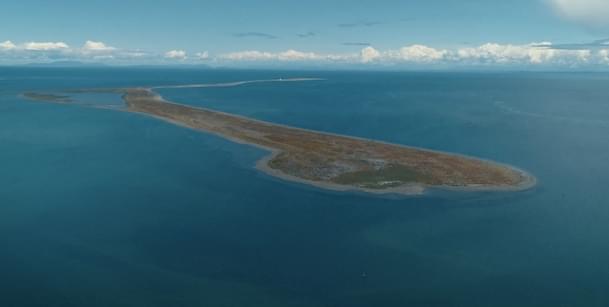Kayaking with Tides - The Basics
Learn the basics of the science behind tides, the different types of tides and how to get accurate information on tides all to help you be safer out on the water.
What Causes Tides?
Imagine looking down from space on the Earth's North Pole. Tides are caused mainly by the gravitational pull of the moon; it causes the water on the planet to bulge towards it. It's exaggerated here, but you get the idea. The water is pulled towards the moon. At this point, it's high water; at this other point, it's low water. However, the earth rotates, so the level of the tide at these two points changes. At one point it falls, while it rises at the other. Roughly 6 hours later, the point that was at high water is now at low water, while the low water point has become high water. This tidal pattern, with two high waters every day, is the most common on the planet, and is called semidiurnal. This is how it looks graphically, but it does not apply everywhere. Because the earth is not evenly-covered with water, some places have just one high water a day, while others experience very mixed tides.
Sources for Tide Information
Whenever you paddle anywhere that is affected by tide, and that's most of the world, you need to check the tide times. There are various sources of information: There are printed forms such as nautical almanacs, or the small tide tables that you can buy, fisherman's tide tables, or you can download and print off information from the internet, such as this. You can see the pattern that we talked about earlier. Or you can have tides from a Smartphone app, which is quite handy because you usually have your phone on you. However, you could have problems with batteries or with water, and therefore, I would always carry printed information as well.
50 years of lightweight, maneuverable, high-performing kayaks.
Check out this interview with Tom Keane, Eddyline Kayaks Co-Owner, on their journey!
Spring & Neap Tides
The key things we need are the times of high and low water and the tidal range, which is very important, so I'd better explain that. When the sun, moon, and Earth line up, the gravitational pull on the earth's oceans is greatest. It doesn't matter whether they line up like this when there's a new moon, or like this 14 days later when it's full moon. In either alignment, the bulge of water on the earth's surface is greatest, so high water is at its highest and low water is at its lowest. The tidal range between the two is greatest. These are known as Spring Tides. The name has nothing to do with the season Spring, but instead comes from an old Viking word.
Between the two Spring Tides is a period when the sun, moon, and Earth line up like this; these are known as Neap Tides. They occur when the moon is waxing in this position, and when it is waning in this position. At these points, the gravitational pull on the earth's oceans is weakest, so the difference in heights, the tidal range between high water and low water, is at its least at neaps. Beautiful day; sunshine, what more could I ask for?
This is how the tidal range at Springs and Neaps might look in practice.
Let's take a spring tide first, where the gravitational pull of the sun and the moon are at their greatest. Low water will be at its lowest and high water will be at its highest. This difference between low water and high water is the tidal range, and it is at a maximum on Spring Tide. All this volume of water has to flow up and down the coast, roughly every 6 hours, and the speed at which it must travel is also at its maximum on a Spring Tide; maximum volume, maximum speed.
Contrast this with Neap Tides, when gravitational effects are at their weakest. Low water will be at its highest and high water will be at its lowest. This difference between low water and high water, the tidal range, is at a minimum on a Neap Tide. Because the smallest volume of waters flowing up and down the coast roughly every 6 hours, the speed at which it must travel is at its minimum on a Neap Tide; minimum volume, minimum speed. That's tidal range.
The video clip shown above is a segment taken from the DVD: "Sea Kayaking with Gordon Brown: Volume 3."
Related Articles
The true story and life-saving lessons of Adam Irino’s very strange day. August 31, 2019 was shaping up…
Dungeness Spit from above, with the New Dungeness Lighthouse in the distance Dungeness…
Mid-summer on your favorite river. High water, low water, or inbetween. No matter; you know every curve…
Ferrying is a technique we use to cross the river, without losing ground or proceeding downstream. When…




